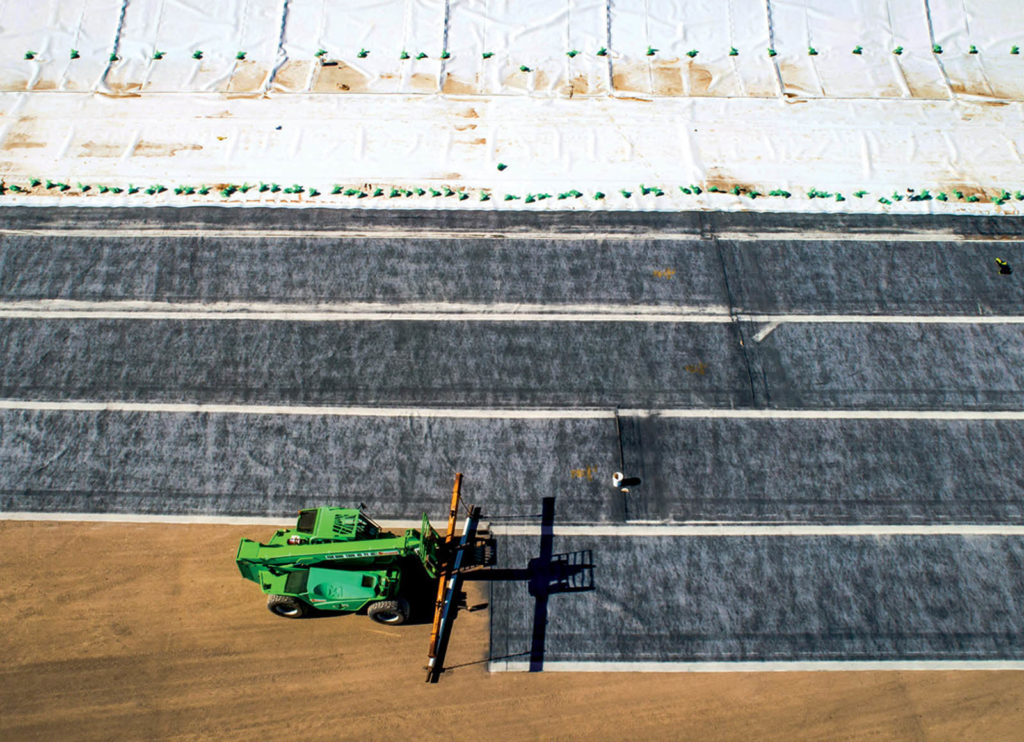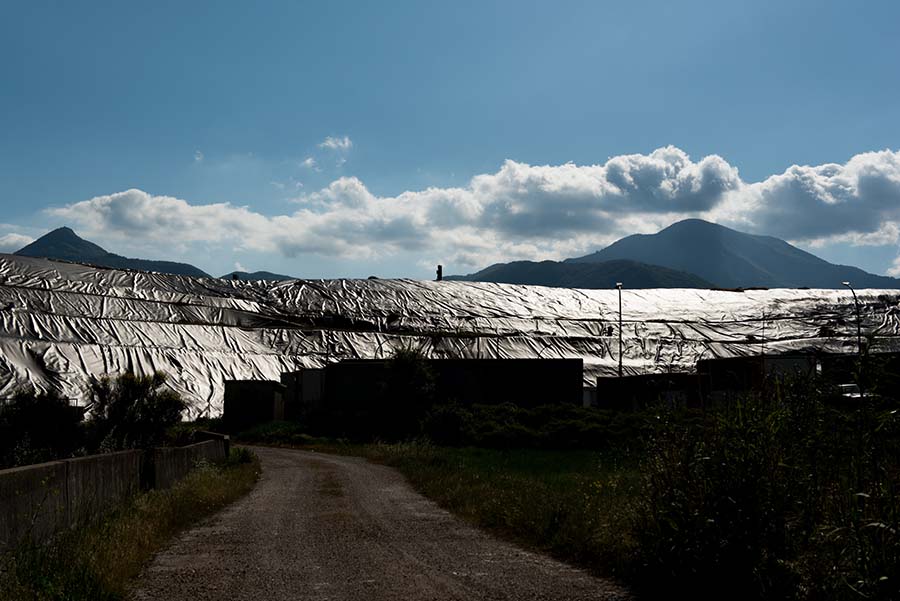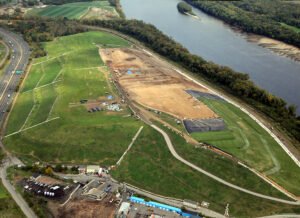Residual strength of a geosynthetic clay liner
October 1st, 2021
Q: I was wondering if I could get some input about the residual strength of a geosynthetic clay liner (GCL). We have lab results where it is “flatlining” for the residual case (Figures 1 and 2, and Tables 2–4). The GCL is proposed for use in a landfill cell with ultimately a maximum of 98 […]
Using bentonite-polymer composite geosynthetic clay liners to contain CCR leachates
October 1st, 2021
FIGURE 1 To tackle tough leachates and shield the environment from hazardous byproducts created by a coal ash site such as this, a GCL is being installed for advanced protection. (Photograph courtesy of CETCO) Coal combustion residuals (CCRs) are the byproducts from combustion in coal-fired boilers that are disposed in lined landfills when they cannot […]
New anchorage and connection strength tests for geosynthetics
October 1st, 2021
FIGURE 1 Field anchor pullout test Connections can have a significant impact on the performance of exposed geosynthetic systems. The connection must be considered as a limiting strength factor and evaluated by the same performance standards as the material alone. If used in critical structures with design lives of more than 30 years, the geosynthetic […]
Hybrid geosynthetic clay liners for attenuation of PFAS in landfill leachates
October 1st, 2021
An exponential increase in understanding of the provenance, migration, and fate of per- and polyfluoroalkyl substances (PFAS) is evident over the past decade. The environmental and health concerns from this group of contaminants are well recognized, but they are still evolving with advancing studies. A key property of PFAS compounds at a molecular level is […]
GSI offers geosynthetics short courses online
August 19th, 2021
MSE wall in Franklin, Tenn. Photograph courtesy of Pinnacle Design/Build Group Inc. The Geosynthetic Institute (GSI) is hosting three short courses on-demand online. GSI and Geosynthetic Materials Association (GMA) member companies and their employees receive discounted rates on all GSI short course registrations. Course 1: Quality Assurance/Quality Control of Geosynthetics in Waste Containment Facilities Recording […]
Tips on choosing a high-quality landfill cover
July 8th, 2021
There is more to shopping for a landfill cover than just selecting materials. While it is important to select a material capable of handling the UV rays and rough surfaces of a landfill cell, it is also a good idea to consider what the manufacturer of the cover can offer beyond just the right polymers. […]
Watershed Geo recognized with MSW management innovator award
July 2nd, 2021
By Krista Willey “Challenge the established.” That is what Arturo Santiago, editor of MSW Management Magazine, titled his Editor’s Comments for the June 2021 issue. This year, Watershed Geo was one of a few chosen for the magazine’s 2021 Innovator Awards that celebrates companies who have challenged older, traditional methods with more advanced technology. Watershed Geo’s team and patented technologies […]
Watershed Geo honored by ACG
June 14th, 2021
The Atlanta National Chapter of the Association for Corporate Growth (ACG), a global professional organization with the mission of driving middle market growth, announced the 2021 Georgia Fast 40, recognizing the Top 40 fastest-growing middle market companies in Georgia. Watershed Geo, a technical solutions company for civil, environmental and energy infrastructure, was selected as one […]
Geosynthetics in action
June 1st, 2021
This issue of Geosynthetics magazine will focus on three distinct applications of geosynthetics. As the first feature, “NPA Geocell for a Railway Line Repair in a Permafrost Region,” describes, it took more than two years to come up with a workable, economical solution for repairs to the deteriorating railway line to Churchill, Man., Canada, the […]
Design of reinforcement geosynthetics in landfill piggyback expansion
June 1st, 2021
FIGURE 1 Installation of reinforcement geosynthetic An operator at a nonhazardous waste storage facility proposed extending the facility’s life, within the existing perimeter, by vertically expanding the cells in operation to a maximum thickness of waste of 52.5 feet (16 m). This project is based on nonhazardous waste storage cells 49.2-feet (15-m) thick, some of […]
 TEXTILES.ORG
TEXTILES.ORG








